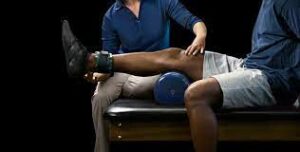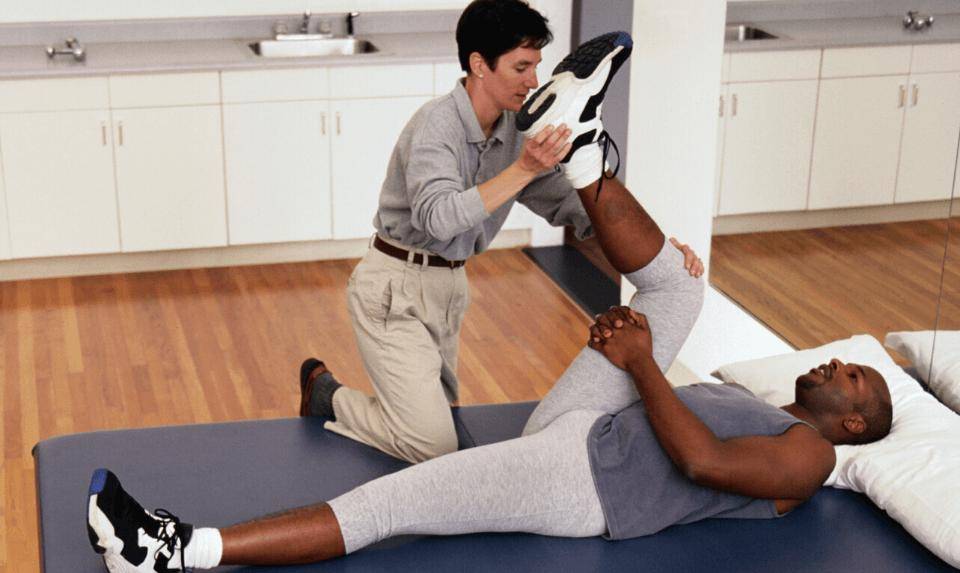If you are experiencing pain in your muscles, joints, or bones, orthopedic physical therapy may be the answer for you. Orthopedic physical therapists are experts in helping people recover from injuries and surgeries that have affected their musculoskeletal system. In this blog post, we will discuss the benefits of orthopedic physical therapy and how it can help relieve your pain.
Contents
- 1 What Is Orthopedic Physical Therapy?
- 2 How Does Orthopedic Physical Therapy Work?
- 3 What Are The Different Types Of Orthopedic Physical Therapy?
- 4 What Is The Difference Between Physical Therapy and Orthopedics?
- 5 What Are Common Orthopedic Conditions?
- 6 What Are The Benefits Of Orthopedic Physical Therapy?
- 7 What Are The Risks Of Orthopedic Physical Therapy?
- 8 Conclusion
What Is Orthopedic Physical Therapy?

Orthopedic physical therapy is a type of PT that focuses on the diagnosis and treatment of disorders of the musculoskeletal system. This includes bones, joints, muscles, tendons, and ligaments.
A physical therapist who specializes in orthopedics can help you by diagnosing your condition and figuring out what is causing it, making a plan for how to treat it, providing therapy to help heal the injury or condition, and teaching you ways to manage your current injury so that you don’t get hurt again in the future.
How Does Orthopedic Physical Therapy Work?
Orthopedic physical therapy uses a combination of exercises, stretches, and manual manipulation to improve the range of motion and relieve pain. The therapist will develop a personalized plan of care based on your specific needs and goals.
What Are The Different Types Of Orthopedic Physical Therapy?

There are many different types of orthopedic physical therapy. Some common types of therapy include:
Strengthening exercises
These exercises help to strengthen the muscles and joints. It includes weight training and other exercises that help improve the strength of the muscles.
Range of motion exercises
These exercises help to improve the flexibility of the joints and muscles. It helps to prevent stiffness of the joints and muscles.
Stretching exercises
These exercises help to stretch the muscles and joints. It helps to improve the range of motion of the joints and muscles.
Balance exercises
These exercises help to improve the balance of the body. It helps to prevent falls and injuries.
Cardiovascular exercises
These exercises help to improve heart and lung function. It helps to reduce the risk of heart disease and stroke.
Massage
One of the oldest and most popular forms of therapy, massage can help to increase blood flow and improve range of motion.
Dry needling
Also known as trigger point dry needling, this therapy involves inserting thin needles into muscle knots in order to release tension and pain.
Joint mobilization
Joint mobilization is a type of physical therapy that uses gentle movements to restore the range of motion and reduce pain.
Heat/ice application
Applying heat or ice to an injured or painful area can help to reduce inflammation and pain.
Muscle stimulation
This type of therapy sends electrical impulses to the muscles to help reduce pain. Electrical stimulation therapy is a type of physical therapy that uses electrical currents to stimulate the muscles and nerves. This therapy can be used to relieve pain, reduce inflammation, and promote healing.
Ultrasound
This type of therapy uses sound waves to heat up the tissues and reduce pain.
Orthopedic physical therapy can help relieve your pain by providing you with a comprehensive exercise program that includes all of these elements. The therapist will design a program specifically for you based on your individual needs.
What Is The Difference Between Physical Therapy and Orthopedics?
The Difference between Physical Therapy and Orthopedics are as follows:
Orthopedic physical therapy is a branch of physical therapy that specifically deals with the diagnosis and treatment of musculoskeletal injuries and conditions. Orthopedic physical therapists are highly trained in the assessment, diagnosis, and treatment of a wide variety of orthopedic conditions and injuries.
Orthopedic surgery helps in the diagnosis and treatment of musculoskeletal injuries and conditions. Orthopedic surgeons are highly trained in the assessment, diagnosis, and treatment of a wide variety of orthopedic conditions and injuries.
What Are Common Orthopedic Conditions?
There are many different orthopedic conditions that can be treated with physical therapy. Some of the most common include:
Arthritis
Arthritis is a condition that causes inflammation and pain in the joints. It can be caused by a variety of things, including age, injury, or disease.
Bursitis
Bursitis is a condition that causes inflammation in the small, fluid-filled sacs (bursae) that cushion the bones, tendons, and muscles around the joints.
Tendinitis
Tendinitis is a condition that causes inflammation in the tendons, which are the tough, rope-like fibers that attach muscle to bone.
What Are The Benefits Of Orthopedic Physical Therapy?
The benefits of orthopedic physical therapy are as follows:
Improve range of motion and flexibility
It can help improve the range of motion and flexibility of your joints and muscles. This can help reduce pain and improve your ability to move around.
Reduce inflammation
This can help reduce the inflammation of your joints and muscles. This can help reduce pain and swelling.
Strengthening your muscles
It can help strengthen your muscles. This can help reduce pain and improve your ability to move around.
Improve your balance and coordination
This therapy can help improve your balance and coordination. This can help reduce the risk of falls and improve your overall mobility.
If you are suffering from pain, orthopedic physical therapy may be able to help. Contact your doctor or physical therapist to discuss whether this type of therapy is right for you.
What Are The Risks Of Orthopedic Physical Therapy?
Orthopedic physical therapy is generally safe. However, there are some risks associated with this type of therapy, including:
Injury
There is a risk of injury when performing any type of physical activity. Be sure to warm up before your therapy session and cool down afterward.
Exhaustion
There is a risk of feeling exhausted after your therapy session. Be sure to drink plenty of fluids and get plenty of rest afterward.
Rare complications
There is a small risk of rare complications, such as infection, bleeding, or blood clots. Be sure to discuss any concerns with your doctor or physical therapist before starting therapy.
Orthopedic physical therapy can be an effective way to reduce pain and improve movement. However, there are some risks involved. Be sure to discuss these risks with your doctor or physical therapist before starting therapy.
Conclusion
It may be concluded that orthopedic physical therapy can be quite helpful in relieving pain. The therapist will design a program specifically for you, keeping in mind your age, weight, height, and the severity of your pain. They will also work with you to find the exercises that work best for you and that you can do at home. Orthopedic physical therapy can help relieve your pain and help you get back to your life.
Physical Therapy help patients recover from pain. If you’re experiencing Back pain, Shoulder pain, Knee pain, Neck pain, Elbow pain, Hip pain, or Arthritis pain, a physical therapist at MantraCare can help: Book a physiotherapy session.


